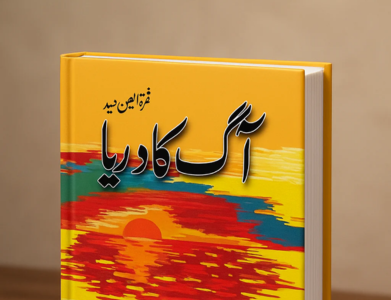
Reviews: Aag Ka Darya Written By Qurratulain Hyder
Qurratulain Hyder’s Aag Ka Darya (River of Fire) is often described as one of the greatest achievements of Urdu literature. Originally published in 1970 and later translated into English by Hyder herself, the novel spans more than two millennia of South Asian history, beginning in the Mauryan period and extending through the Sultanate, Mughal, colonial, and post-Partition eras.
What Critics Say
- Grandeur & Ambitious Scope
According to Wikipedia, Aag Ka Darya is hailed as “one of the Indian Subcontinent’s best known novels” and spans over two millennia, from the Mauryan era to post-Partition India. Hyder herself translated it into English as River of Fire in 1998.
Pankaj Mishra in The New York Review of Books praises the novel’s “magisterial ambition and technical resourcefulness,” noting its innovative use of forms like letters, chronicles, parables, and journals.
The Times Literary Supplement’s Aamer Hussein famously compared it to One Hundred Years of Solitude in its significance to Urdu literature.
- Enduring Relevance
In a 2019 review of the novel’s reprint, The New York Times’ Aditi Sriram emphasized that the work “is as relevant in 2019 as it was when she first wrote it in 1959.” - Depth of Historical Perspective
Writing for The Nation, Kamil Ahsan highlights the novel’s syncretic portrayal of 2,500 years of the subcontinent’s history, from ancient dynasties to the anguish of Partition. - Lyrical, Inclusive, and Allusive Style
As described in Daily Times, the novel redefines what Urdu prose can achieve. It evokes themes of reincarnation, loneliness, subaltern voices, and philosophical introspection, weaving them through history without resorting to absolutes.
Reader Experiences
- Positive, Yet Challenging
On StoryGraph, one reader praises the novel’s emotional depth and historical context but notes that the translation can be laborious, filled with untranslated Urdu terms and requiring frequent look-ups. They found the first half (classical and medieval eras) more intriguing, while the latter half carries the emotional core. - Mixed Expectations
A blog reviewer rated it 3/5. They admired the lyrical historical sweep and characters, Gautam, Champa, Kamal, and Cyril, but found the narrative somewhat disjointed, citing arbitrary chapter transitions and heavy use of untranslated terms. - High Acclaim for Narrative Mastery
On Goodreads, one reader gave it 4.5/5, celebrating Hyder’s ability to navigate multiple genres, from mystical and colonial narratives to exilic tales and social satire. The reviewer remarked on the cyclical nature of human experience and the impermanence of identities. - Struggle with Density
Another Goodreads review said the narrative lost steam midway, particularly when the setting shifted to 1940s Lucknow—some scenes felt culturally overindulgent and disrupted the flow. - Highly Regarded in the Community
Reddit users often mention Aag Ka Darya among must-read Urdu literature, even if it’s not “easy to digest”:
“Aag ka Darya is 500 pages, I believe. Not easy to digest but one of the finest things I’ve ever read”
“I suggest this every time someone asks for a similar suggestion. Aag ka Darya by Quratulain Haider. It’s a remarkable novel.”
“I’m really enjoying Aag ka Darya by Qurrarulain Hayder”
Summary Table
| Aspect | Highlights | Challenges |
| Historical Ambition | Spans ~2,500 years; multigenerational, syncretic portrayal | Dense timeline may be overwhelming for some readers |
| Narrative Style | Lyrical, allusive, genre-blending, inclusion of mysticism | Nonlinear flow; sometimes disorienting transitions |
| Translation Quality | Author-translated, preserving original voice | Heavy Urdu terms and archaic language makes it demanding |
| Cultural Impact | Considered one of the greatest Urdu novels, still celebrated decades later | Length and intellectual depth can feel daunting to casual readers |
Must Read: The Best Urdu Writers of All Time
Final Thoughts: Aag Ka Darya
Aag Ka Darya stands as a literary titan in Urdu literature, a sweeping, lyrical meditation on identity, history, and humanity. It’s a work that rewards patience and reflection, filled with philosophical richness and cultural breadth.
That said, many readers note its challenging readability, particularly in translation and narrative structure. If you’re up for a marathon rather than a sprint, prepared to immerse in a dense yet beautiful tapestry of time, this novel promises an unforgettable journey.
Comments (0)